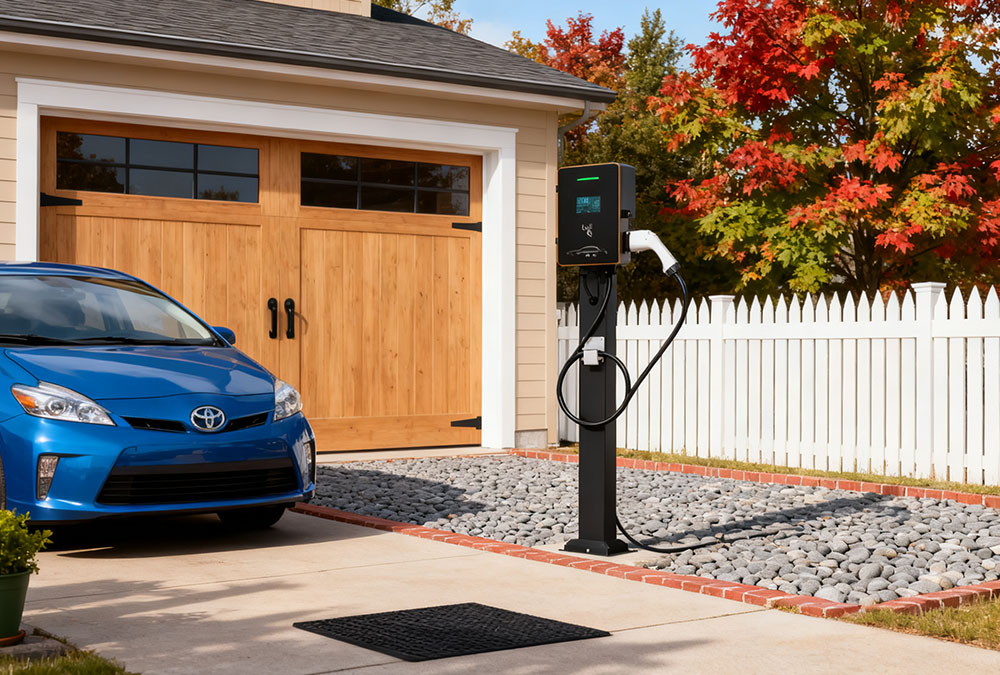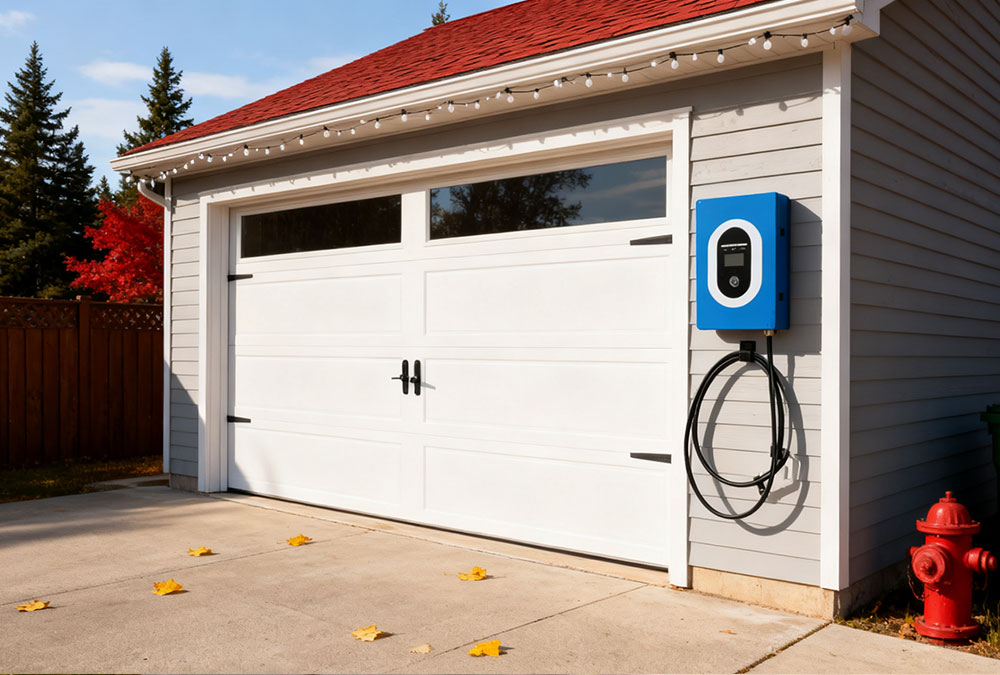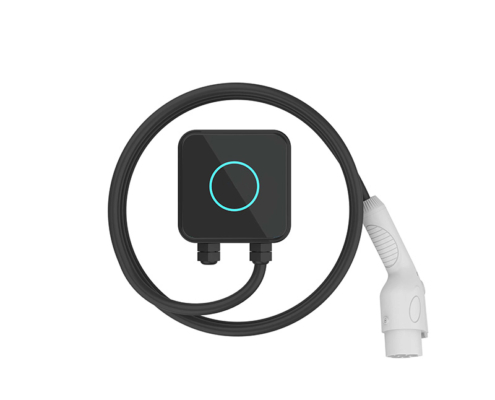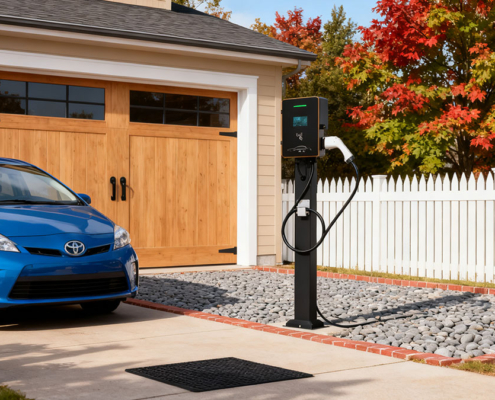
The Road Ahead: Why Home EV Charging Matters in 2025
Electric mobility is no longer a niche trend—it’s the new normal. By early 2025, over 7 million electric vehicles are on U.S. roads, accounting for more than 12% of new car sales (source: Argonne National Laboratory). As this shift accelerates, the home EV charger has become an essential part of every modern household’s energy system.
AnengJi, a global EV charging manufacturer, brings together policy insights, customer needs, and technical innovation to explain why installing a home EV charger in 2025 is more than a convenience—it’s an investment in safety, savings, and sustainability.
Top 8 Reasons to Install an EV Charging Station at Home
1. Everyday Convenience: Plug In, Power Up, and Drive Away
Public charging networks are expanding, but waiting lines, faulty stations, and unpredictable costs are still common. A home EV charger eliminates all that frustration.
A standard Level 1 charger (120V) adds about 3–5 miles of range per hour, taking roughly 40–50 hours to fully charge a 60kWh battery.
Upgrade to a Level 2 charger (240V), and you’ll get 20–40 miles of range per hour—enough to fully charge overnight.
Simply plug in when you park, and wake up every morning to a full battery. No queues, no worries, just a seamless routine that fits your lifestyle.
2. Save Big on Charging Costs with Clear Long-Term Returns
Charging at home costs a fraction of public fast-charging. Consider this:
- Home electricity rates: Off-peak hours often range from $0.10–$0.15/kWh.
- Public DC fast charging: Typically $0.40–$0.60/kWh or more, sometimes billed by the minute.
For a driver covering 12,000 miles per year, that’s around 3,600 kWh annually. Charging entirely at home costs about $360–$540, while relying on public fast charging could run $1,400–$2,100—a savings of over $5,000 in five years.
AnengJi’s smart chargers support dynamic load management, automatically scheduling charging during low-rate hours to cut your bill even further.
3. Take Advantage of 2025’s Federal and State Incentives
2025 remains a golden year for homeowners to install EV chargers, thanks to generous federal and local incentives.
- Federal Tax Credit (IRA Section 30C): Up to 30% of the total installation cost (max $1,000) for residential users.
- State-Level Rebates: California’s CALeVIP program offers up to $1,500; New York’s ChargeReadyNY provides $400 cashback.
- Utility Programs: PG&E, Duke Energy, and Con Edison offer free installations, special rates, or rebates for nighttime charging.
Keep in mind: Many of these incentives have annual funding caps and may phase out in the next 2–3 years. The sooner you install, the more you save.

4. Boost Property Value and Market Appeal
In EV-friendly regions such as California, Washington, and Colorado, homes equipped with charging infrastructure are already outperforming others.
- Zillow’s 2024 study found that homes with Level 2 chargers sold for 2.8% more than similar listings.
- Realtor.com reports that 67% of buyers now consider EV charging a key home feature.
- A private charger adds “future-ready” value, signaling sustainability and smart living.
AnengJi’s sleek, space-efficient wall-mounted or pedestal chargers combine utility with design, enhancing both functionality and aesthetics.
5. Integrate Smart Energy: Solar, Storage, and EV Charging in One
Today’s home EV charger is more than a power outlet—it’s part of a connected energy system.
AnengJi’s Wi-Fi and 4G-enabled chargers let you monitor energy use, schedule charging, and optimize grid efficiency through a mobile app. They pair seamlessly with solar panels and home battery systems like Tesla Powerwall or LG RESU.
You can charge your EV with solar power during the day, store energy for nighttime use, or even run your home during blackouts using Vehicle-to-Home (V2H) backup. It’s clean, reliable, and future-proof.
6. Prepare for the Future: V2G and Smart Grid Compatibility
The energy grid of the future is interactive, distributed, and data-driven. EVs will play a key role as mobile storage units.
Vehicle-to-Grid (V2G) technology allows your EV to send power back to the grid during peak demand, earning credit or compensation. Though large-scale deployment is still emerging in the U.S., hardware compatibility matters now.
AnengJi’s next-generation chargers support the OCPP 2.0 protocol, ensuring communication with grid operators and energy aggregators. Installing one today means your home is ready to participate in the energy marketplace of tomorrow.
7. Drive Toward Carbon Neutrality and Cleaner Living
Transportation accounts for nearly 28% of household carbon emissions in the U.S. Switching to an electric vehicle—and charging it with clean power—makes a measurable difference.
A typical EV driven 12,000 miles annually emits 4.6 fewer tons of CO₂ than a gas vehicle (EPA data). Combine your charger with solar energy or green utility plans, and your home’s footprint drops even further.
Every home charger installed contributes to the nation’s carbon reduction goals under the Paris Agreement.
AnengJi’s production process meets ISO 14001 environmental standards and prioritizes recyclable materials for a truly sustainable lifecycle.
8. Safety First: Certified Installation and Reliable Operation
Safety is the foundation of every home EV charger installation.
- Level 1 chargers can use standard outlets, but extended high-load use risks overheating.
- Level 2 systems require a licensed electrician and a dedicated 240V circuit (40–60 amps), compliant with NEC Article 625.
All AnengJi chargers carry UL 2594, CE, TUV, and CB certifications, featuring surge protection, leakage detection, lightning resistance, and IP65 waterproofing.
They come with 3–5 years of warranty, remote diagnostics, and firmware updates to ensure long-term reliability.
DIY installation may void your warranty or insurance coverage—always go with a certified professional.
Why Homeowners Worldwide Choose AnengJi
For over two decades, AnengJi has specialized in EV charging and power electronics, maintaining over 15% of its workforce in R&D. Our chargers comply with ISO 9001, IATF 16949, ISO 14001, and ISO 45001 standards.
They’re compatible with J1772, Type 2, CCS1, CCS2, and CHAdeMO, and come with J1772-to-NACS adapters for Tesla and new NACS-standard vehicles.
With OCPP 1.6J / 2.0 support, our systems integrate easily into smart home or grid platforms.
AnengJi products are trusted by State Grid Corporation of China, Southern Power Grid, and major global partners across North America, Europe, and Southeast Asia.
We also provide OEM/ODM customization to meet certification and market needs worldwide.
Ready to start your home EV charger installation in 2025?
Contact an AnengJi specialist for free consultation, installation guidance, and rebate assistance—and make 2025 the year you power your home the smarter way.
FAQ – Home EV Charger Installation 2025
Q1: How much does it cost to install a home EV charger in 2025?
The average cost ranges from $800 to $2,000, including equipment and labor. Federal tax credits under the IRA can reduce that by up to 30%.
Q2: What’s the difference between Level 1 and Level 2 chargers?
Level 1 uses a standard 120V outlet and charges slowly. Level 2 uses a 240V circuit and can charge most EVs overnight—ideal for daily use.
Q3: Are there incentives for EV charger installation in the USA?
Yes. Homeowners can apply for federal tax credits, state rebates, and utility discounts depending on location.
Q4: Can I install a home EV charger myself?
It’s not recommended. Certified electricians ensure compliance with NEC codes and maintain your product warranty and insurance coverage.
Q5: Which home EV chargers are best for 2025?
Look for UL-certified Level 2 chargers with smart connectivity (Wi-Fi or app control), OCPP compatibility, and NACS support for Tesla and future models.






Leave a Reply
Want to join the discussion?Feel free to contribute!